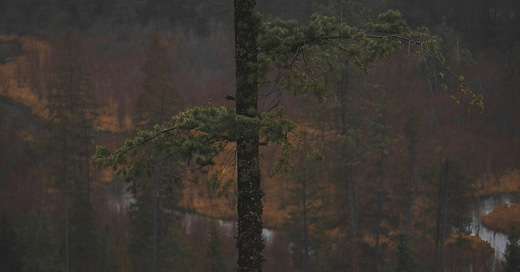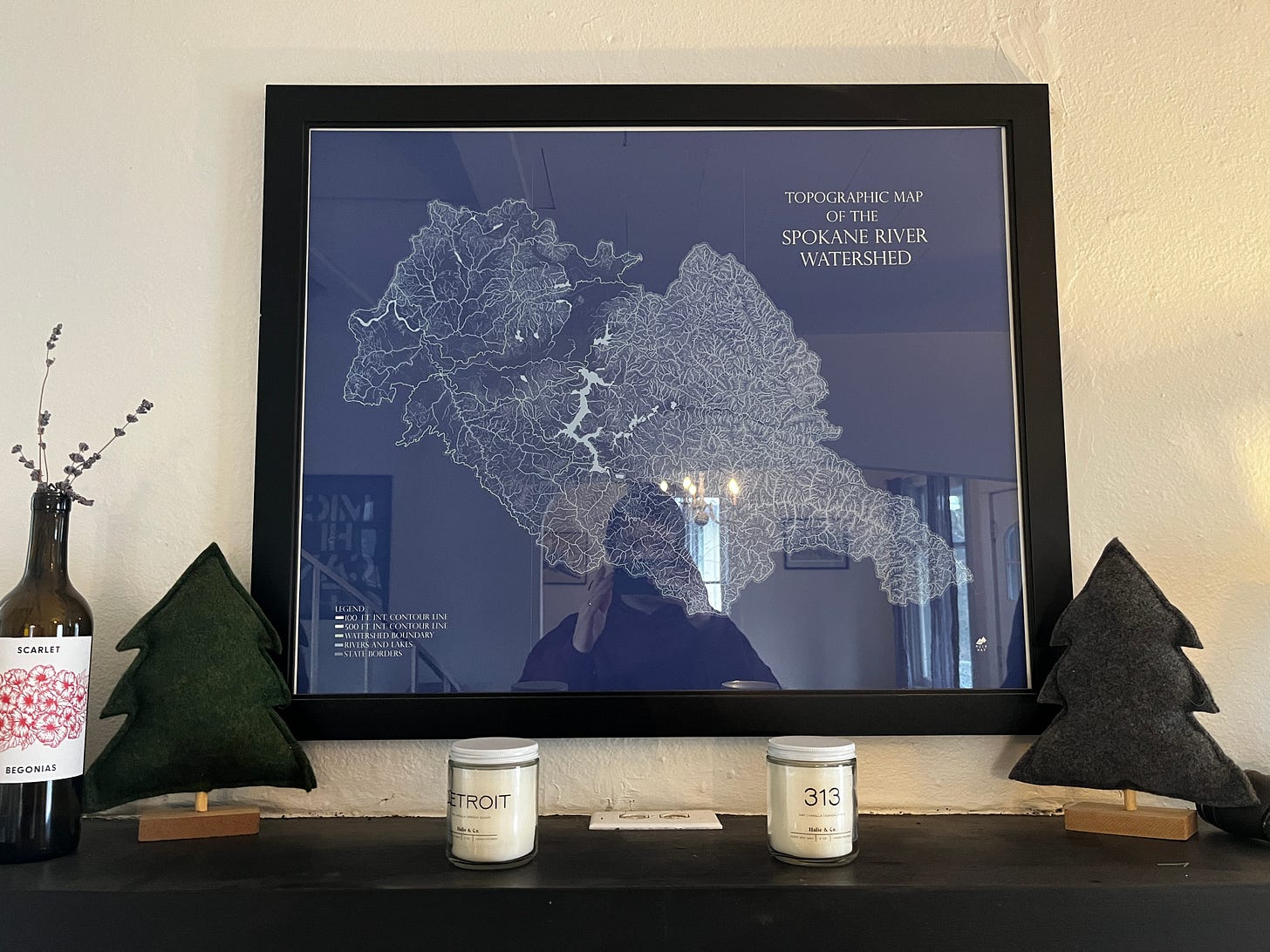“What is it?”
I get this question a lot when I tell people about Branches, or, as we call ourselves these days, All These Branches (ATB for short). A fair question. It’s gone through a few iterations. The first lasted for half its existence. Back then, it was a semi-progressive (progressive by Spokane standards) Christian church on the north side of Spokane. The term branches, at that time, alluding to the biblical imagery of vines and branches.
It’s done a lot of journeying in the seven years since then, though. Leaving certain labels, finding others. One such label left behind being the category of Christian. Calling ourselves Christian wouldn’t be accurate or honest anymore. Some people who are part of the community live under that umbrella, many don’t.
So we don’t really call ourselves a church anymore, either. Because doing so can feel a bit too close to that world. In terms common to today, we are a spiritual community, if not a religious one.
As someone who has helped lead and shape ATB as its pastor the seven years beyond its initial seven, I’ve had to field this what is it question often.
We like to say that I’m the pastor, and so are you at ATB. Because like the rivers I allude to later in this post, no one person has a monopoly on how truth or meaning flows. But out of an attempt to yield clarity and share what I think is a really cool thing we got going, this post is my best attempt at a response to that what is it question through terms and phrases and ideas I’ve learned from and developed the last few years.
Before I dive in though, I feel I should include the land acknowledgment we start our gatherings with. Recognizing that this move from Christianity to earth-based spiritual practice is also a move from colonization back to a wisdom that had already been tied to these lands through First People’s who lived on it long before us. That somber notion is something we work to not overlook:
All These Branches would like to acknowledge that the land we gather on is the historical home of the Kootenai, Spokane, Couer d’Alene tribes. The ancestors of these First Nations people lived on this land for hundreds of years prior to the construction of this church building, caring for and living in balance with the landscape. At All These Branches, we are committed to learning from, supporting, and elevating the voices of First Nations individuals in order to work in collaboration to restore what our presence as a predominantly European, institutional religious system destructed through our occupation of their land. We seek to look to our First Nations counterparts for guidance and wisdom in that pursuit.
(credit to friend and ATB board chair, Morgan Smith, for helping craft this)
What is it?
Here’s what I’ve been telling people lately.
All These Branches is an eco-spiritual, river-centric, tributarian community.
Over the rest of this post, I want to break down each piece of that definition and weave back to how those pieces tie into the name shift from Branches (although most still refer to it as this as its less clunky, lol) to All These Branches.
Eco-Spiritual
The earth is a holobiont (an assemblage of parts that constitute a greater whole) of endless, cyclical life. Things become other things over and over again. Left to its own devices, our little rock amidst the vast black vacuum of space has a habit of persisting toward abundance. To take a moment to pause in the acknowledgement that the planet we reside on blooms and bursts with breath and beating hearts, soil and ocean, yields no small wonder.
This endless blooming and becoming of our planet is a profound fact. There is a kinship to all the shared life that we reside amongst and are also a part of.
Anytime I read a sci-fi book about another planet, I become enamored when the author describes the ecology of the place. The flora and fauna of foreign worlds mesmerize me. To be eco-spiritual is to boomerang that wonder right back here to this world we live on presently. To zoom out sometimes allows us to better zoom in when it comes to the wonder that exists within the mundane of the everyday.
Spirituality has many apt definitions. For me, the simplest and most centering is, an orientation toward recognizing the miraculous within the common. A loose definition of ecology could be, the relationship organisms have with one another and their physical surroundings.
To be eco-spiritual then, is to work toward seeing the relationships between the common landscape around us as a miracle worthy of attention, care, and praise. That ecological landscape not just being something observed, but also something we are a part of. These relationships amongst us, when elevated through the mindfulness and intention of spiritual practice, can reveal a large, interdependent and beautiful family of living things that weaves throughout the whole of this great earth.
This is why we tend to focus our time together at All These Branches on topics like frogs, mycelium, mother trees, rivers, etc. It’s also why on some mornings you might walk in to find people participating in an activity where for 20 minutes, they try to live into the mind of another species… within our common landscapes there are miraculous revelations to be had. Sometimes it helps to act like a frog to fully remind oneself of this…
River-Centric
Sitting above the fireplace in my wife and I’s house is a hydrological map of the Spokane River Watershed. There’s no discernible manmade features on it. No roads or cities. Our house and the houses of our friends and colleagues all sit somewhere amidst the spider webbing of creeks, streams, and the main artery that is the Spokane river.
When I look at that map, I think about the landscape I live within. A landscape that is made up of all these branches of flowing water that connect to the main geographic focal point humans centered around when settling here, the river itself. Whether for the purposes of the now non-existent salmon runs or for the power the rivers flow helped generate, people have come to this river for what it can yield.
As people residing in Spokane, we are a river people. Whether we acknowledge that or not. To be a resident here is to be river-centric.
But to be river-centric is more than just a geographic identity, it is also an orientation. I defer to the words of poet Christopher Dombrowski,
“…to truly fathom a river is to know it from its headwaters to its mouth, a body of water in constant arrival, an extension of everything upstream and down. It sounds overly philosophical but it's actually elemental: to acknowledge our generational non-separateness, our interpenetration, is to take a step toward preservation and transformation.”
- Chris Dombrowski, The River You Touch
The mystic’s sense of self, like a river, is a body in constant arrival. From headwaters to mouth, from beginning to end… our journey as spiritual seekers mirrors that of our river; from the particular into the universal, from the stream to the sea.
Start with the self; as we flow, we realize how that self — as it travels through ever-expanding terrain — connects to the Universal Life-Force, Breath, Love, Divine, God, Flow, Spirit, Christ, All, whatever name — through its webbing to all the pieces and places it flows through.
River-centric is a journeying from headwaters to mouth, from particular to universal. A transcending and including of the pieces of meaning and reverence and self that we gather along the terrain of life.
It is also an acknowledgment of our place on earth; making meaning from this land, this ecology, here in Spokane. It is a bent toward looking at what is right in front of us, and seeing it as worthy of praise and adoration.
Tributarian
Most in our community came from a Christian background. So this is, in one sense, a play on words from a word in that world: trinitarian. But it also goes further. Before we get there though, a bit on the word it plays off of.
Trinitarian is a main focal point of Christian theology. The notion of a three in one reality to the Divine. God is Father, Son, and Spirit. God is also God. But within the One is the Three.
When Christianity was still the plot on which I pitched my tent, I liked playing with this idea. It really can be beautiful. I liked to say that the Son part was existence, manifest as Jesus, as a person, an existent entity. God was insistence — that insistent feeling you have that there is more beyond the black and white. Spirit then, was persistence — that persistent push to be on the look out for that insistent presence within existence.
When there’s three tied to one, the themes have space to flow. But this new phrase, tributarian, takes these ideas a step further, and also grounds them in the river-centric land we reside. A tributary, of course, being a branch of a river.
Back to the map above the fireplace — looking at it, the sheer amount of creek and stream and smaller river tributaries that feed the watershed of the Spokane River is truly astounding. Particularly when you consider that it is not even that large a watershed compared to others in our region like those of the Snake or Columbia Rivers.
All those branches of water — the creeks and streams and rivers — travel terrain and context. Each yields to the larger story.
A Franciscan by the name of Richard Rohr, a modern mystic, talks about how Christ is another name for everything. There’s a perspective he explores called panentheism, not to be confused with pantheism. Whereas pantheism would say that God is all things, panentheism likes to shift that a little by saying that God exists within all things, but God also transcends beyond the localized individual nature of things. Similar to how every note within a song makes the song, but the song itself transcends any one note by being comprised of all the notes together.
Tributarain theology, as I’ve come to refer to it as, is an orientation that sees each piece coming together to yield the whole. In the same way that a stream, creek, or river yields a watershed through the collection of each of those parts converging. To make the full Spokane River watershed, you need every tributary. More than three in one, tributarian is all in one.
All These Branches
Ponderosa pine, marmot, elk, neighbor, arrow leaf balsam root… all these things in our geographic midst are pieces, or branches, of a Divinity inherent within all things and weaving a larger collective story through the watershed-esque confluence of them coming together to reveal a whole bigger than any one piece left by itself.
To be eco-spiritual, river-centric, and tributarian is to recognize how each piece of this living world is a type of metaphorical tributary that feeds into the whole of the metaphorical watershed of earth; the creek is the river is the ocean, the frog is the friend is the forest. And therefore, the world and all its pieces scattered around us, is worthy of time, wonder, and care.
All These Branches is this idea, as a name. Just as every stream contributes to a watershed, every piece of this living world converges to create the image of the Divine. Whether human, animal, plant, fungus, river, stream, ocean, rain, etc. all these branches is the recipe for the fullness of what the Divine might be.





